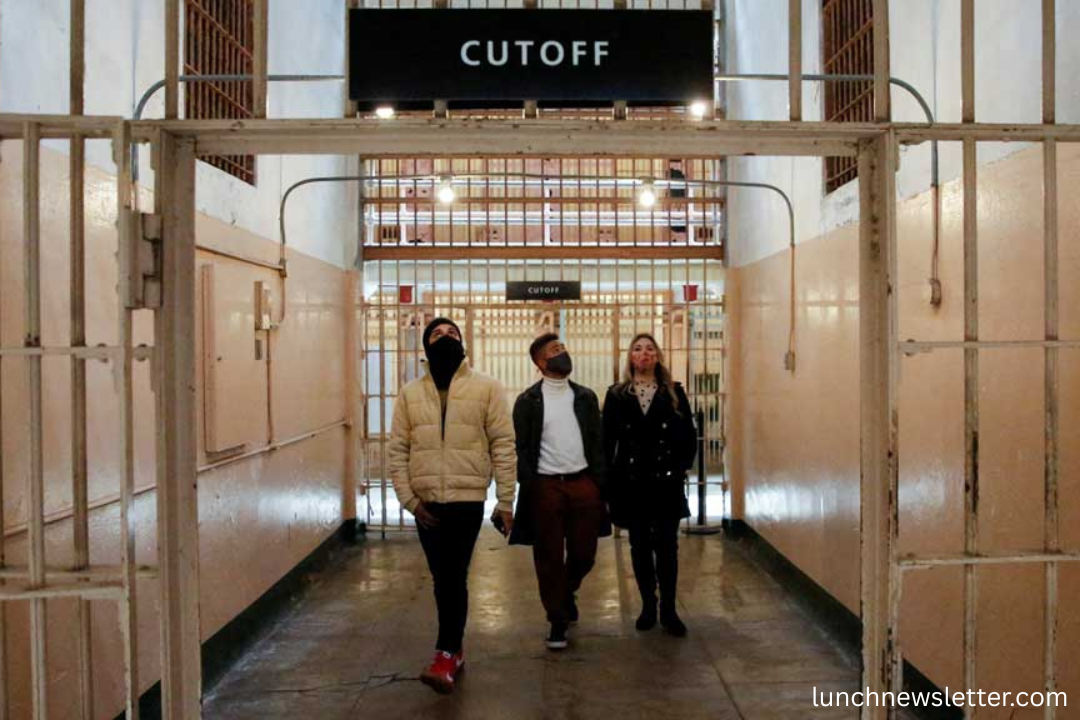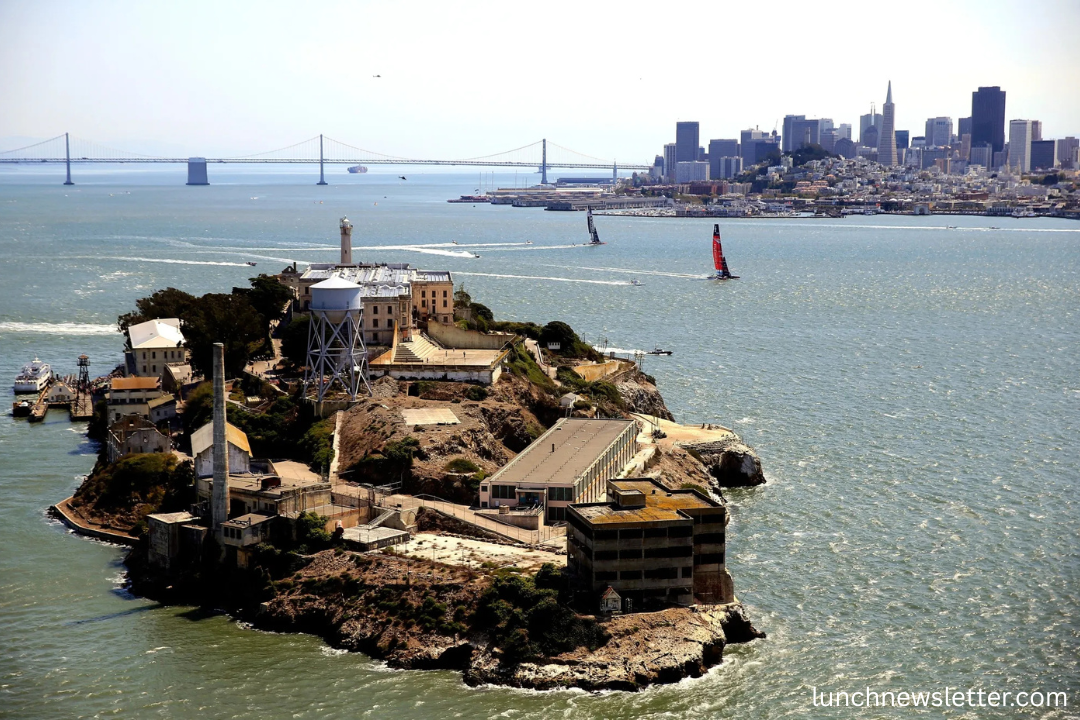Alcatraz, a name that evokes images of a notorious island prison, is back in the spotlight. Recently, the island reopened its doors to the public following an executive order signed by former President Donald Trump. This momentous decision marks a shift in the island’s narrative from a symbol of punishment to a renewed focus on history, preservation, and tourism. In this article, we explore the reopening of Alcatraz, its historical significance, and what it means for the future of this iconic landmark.
The History of Alcatraz – From Prison to Public Attraction
Alcatraz Island, located in the San Francisco Bay, has a rich and turbulent history. Initially used by the U.S. military during the 19th century, Alcatraz became a federal penitentiary in 1934. Over the years, it housed some of the most dangerous criminals in the country, including infamous figures like Al Capone and George “Machine Gun” Kelly.
The prison remained in operation until 1963, after which the island was abandoned for a period. In 1972, the island was designated a National Historic Site and opened to the public for tours. Today, Alcatraz is a major tourist attraction, drawing visitors from around the world to explore its cell blocks, stunning views of San Francisco, and fascinating history.
Trump’s Executive Order and Alcatraz’s Reopening
In late 2024, former President Donald Trump signed an executive order aimed at revitalizing U.S. landmarks and national parks. As part of this initiative, Alcatraz was included in the list of sites earmarked for reopening and revitalization. This decision was met with mixed reactions, but it undeniably stirred public interest in Alcatraz and its potential future.
While the island had never fully closed to the public, the reopening under Trump’s order meant increased investment, better infrastructure, and a fresh push to bring more tourists to Alcatraz. The aim was to strike a balance between preserving the island’s historical integrity and turning it into a vibrant hub for learning and tourism.
The Trump administration’s focus on heritage preservation is reflected in the resources allocated to Alcatraz’s reopening. Improvements in visitor facilities, new historical exhibits, and enhanced security were some of the initial changes made to prepare the island for its relaunch.
The Significance of Alcatraz in American History

Alcatraz holds a special place in American history. The prison was built in the mid-1800s, originally intended as a military fortress to protect the San Francisco Bay. However, it became infamous as a federal penitentiary in 1934 when the U.S. government decided to house high-profile criminals in its high-security cells.
Some of the most notorious criminals in history spent time on Alcatraz Island, including mobster Al Capone. The island was also home to notorious criminals like Robert Stroud, the “Birdman of Alcatraz,” who became infamous for his crimes and his time in solitary confinement. The prison became a symbol of America’s tough-on-crime approach, housing some of the country’s most dangerous individuals.
However, Alcatraz’s significance goes beyond its prison history. The island is also closely tied to the Native American rights movement. In 1969, a group of Native American activists occupied Alcatraz in protest against the U.S. government’s treatment of indigenous peoples. The occupation lasted for over a year and brought attention to issues of social justice and the rights of Native Americans.
Today, Alcatraz reminds us of America’s penal history and the struggles for social justice that have shaped the country’s development.
Alcatraz Today – A Cultural and Educational Hub

With its reopening under Trump’s executive order, Alcatraz aims to go beyond its prison history and serve as an educational and cultural resource for visitors. The island’s new exhibits focus on its multifaceted history, including its period as a military prison, its time as a federal penitentiary, and its role in the Native American rights movement.
One of the standout features of the revamped Alcatraz experience is the opportunity for visitors to dive deeper into the lives of the individuals who were incarcerated there. Personal stories, photographs, and artifacts give a more intimate perspective on life within the prison walls.
Additionally, Alcatraz has placed a stronger emphasis on environmental sustainability. The island is home to unique wildlife, including a large population of seabirds. As part of the reopening effort, more attention is being given to preserving the island’s natural ecosystem. Visitors can now explore not only the historical aspects of Alcatraz but also its ecological significance.
What the Reopening Means for Alcatraz’s Future
The reopening of Alcatraz presents new opportunities for both tourism and preservation. By reinvesting in the island, the Trump administration’s executive order has ensured that the historical site will remain a part of American culture for years to come.
In addition to the physical improvements made to the island, there are now more programs available for educational outreach. Schools and educational groups can visit Alcatraz and participate in interactive tours that highlight the island’s history, from the prison era to the Native American occupation.
This increased accessibility and emphasis on education mean that future generations will have the opportunity to learn about Alcatraz’s multifaceted history. The island’s story is complex, and by bringing it into the modern era, there is hope that it can serve as a platform for dialogue about social issues, justice, and history.
Tourism Impact – Alcatraz as a Major Attraction
The reopening of Alcatraz has led to a surge in tourism. The island, already one of San Francisco’s most popular tourist destinations, is expected to draw even more visitors in the coming years. The Trump administration’s efforts to modernize the island’s infrastructure, including the development of new tour options and facilities, will make it more accessible to a global audience.
The increased focus on Alcatraz as a cultural site rather than just a prison also means that it will likely attract a more diverse crowd. History enthusiasts, students, and families will have the chance to experience the island’s fascinating past in a new way. Additionally, the island’s stunning natural beauty and breathtaking views of the San Francisco skyline make it an ideal location for those looking to enjoy the outdoors while learning about the country’s history.
Local businesses in San Francisco also stand to benefit from the influx of tourists visiting Alcatraz. Hotels, restaurants, and other attractions around the city are expected to see a boost in business as more visitors flock to the region to explore this historic site.
The Challenges of Alcatraz’s Reopening
While the reopening of Alcatraz is a positive development, it is not without its challenges. The island’s unique historical and environmental aspects require careful management to preserve its integrity. Concerns about overcrowding, the environmental impact of increased tourism, and the need for ongoing maintenance of the island’s infrastructure exist.
To address these issues, Alcatraz officials have implemented measures to limit the number of visitors at any given time and to promote sustainable tourism. This will ensure that Alcatraz remains a place of learning and reflection rather than becoming overwhelmed by mass tourism.
Additionally, continued investment in preservation and maintenance will be crucial to ensuring that the island remains accessible for future generations.
Frequently Asked Questions (FAQs)
Why did Alcatraz reopen after Trump’s order?
Alcatraz reopened following an executive order from former President Donald Trump aimed at revitalizing key American landmarks. The order included Alcatraz as a historical site worthy of preservation and enhanced public engagement through tourism and education.
Is Alcatraz open to the public now?
Yes, Alcatraz is currently open to the public. Tours are available, including ferry transportation, guided walks, and multimedia exhibits. Due to high demand, it is recommended that tickets be booked in advance.
What new features were added to Alcatraz after reopening?
Following the reopening, Alcatraz underwent infrastructure upgrades, introduced new historical exhibits, and expanded educational programs. The site now features deeper narratives about its prison history, Native American occupation, and environmental significance.
Was Alcatraz completely closed before Trump’s executive order?
Alcatraz was not entirely closed but operated at limited capacity due to infrastructure concerns and public health guidelines. Trump’s order led to renewed investment, allowing for full reopening and modernization.
What safety measures are in place for visitors at Alcatraz?
Visitor safety is a priority. Alcatraz now includes enhanced accessibility, updated walkways, increased security presence, and environmental protections to ensure a safe and respectful experience for all guests.
Can you visit the original prison cells at Alcatraz?
Yes, visitors can walk through the original prison blocks, including the cells that housed notorious inmates like Al Capone and the “Birdman of Alcatraz.” Self-guided and audio tours provide context and stories from former guards and prisoners.
How do I get to Alcatraz Island?
Alcatraz is accessible only by ferry, departing from Pier 33 in San Francisco. An official concessionaire operates the ferry service, and tickets can be purchased online or at the dock, though early booking is advised.
What is the significance of Alcatraz in U.S. history?
Alcatraz is a key historical landmark. It has served as a military fort, federal prison, and site of Native American activism. Its layered history makes it one of the most unique and important heritage sites in the United States.
Conclusion
Alcatraz’sng of Alcatraz after Trump’s executive order marks a new change in the island’s storied history. What was once an island’s punishment is now a place of learning, reflection, and preservation. With its rich history, stunning views, and cultural significance, Alcatraz remains a cornerstone of American heritage. As the island continues to evolve, its role as a historical and educational hub will only grow in importance. Alcatraz is more than just a prison. It’s a symbol of America’s complex history and a testament to America’s Resilience to those who have shaped the nation.
